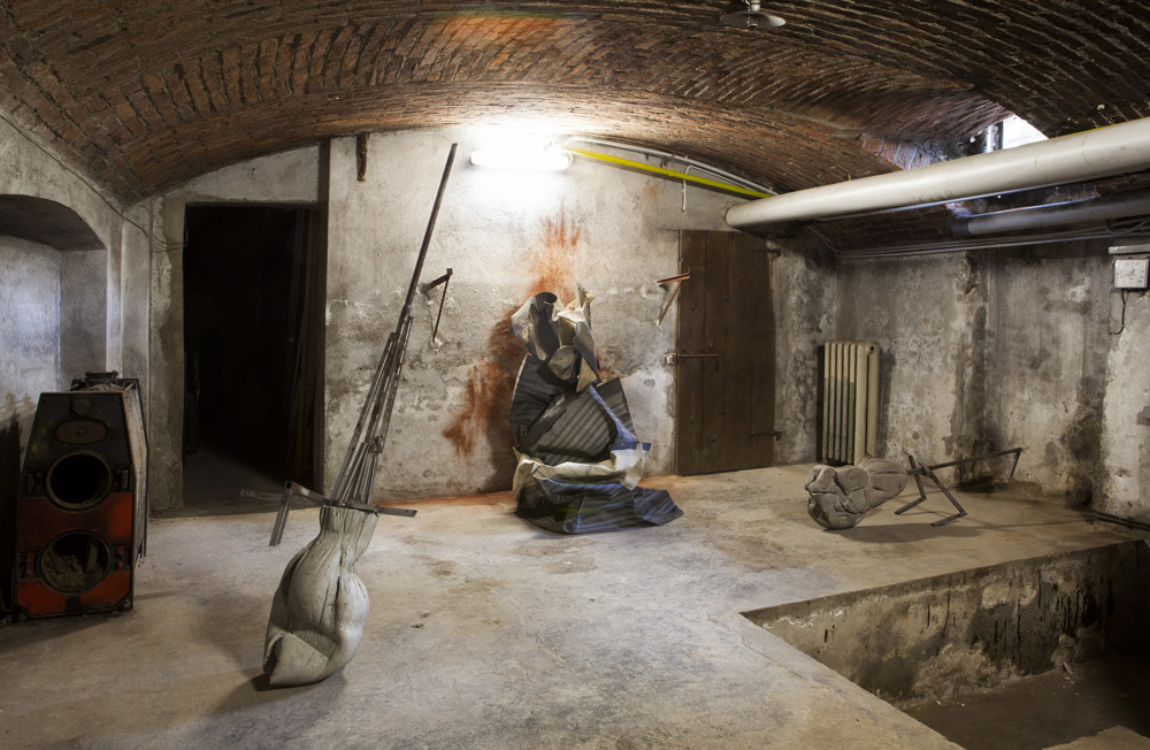Room 1
In the 1940s Giovanni Testori (1923-1993), even before being a writer, was known to most as a realist painter and critic, sympathetic to the experience of the Milanese school that came out of “Corrente”, a fellow traveller of Morlotti, Cassinari and Guttuso. Even his interventions as a militant critic are dictated by the need to find, first and foremost for himself, a viable path in Italian realism, capable of going beyond Picasso’s dazzling vision, after having gone through it.
The Four Seasons
After participating in a number of exhibitions and awards, in 1947 Testori painted a cycle of four frescoes dedicated to the seasons, for the dining room of his brother Giuseppe’s house in Novate, of which the cartoons used for the spolvero, the technique of transferring the drawing onto fresh plaster, are also preserved.
The pendentive of San Carlo
In 1948, thanks to his friendship with Father David Maria Turoldo, Testori obtained permission to paint four frescoes, representing the symbols of the Evangelists, in the pendentives of the presbytery dome of the church of San Carlo al Corso. But on 10 September of the same year, the Prior of the Servite Fathers in charge of the church invited a “Mixed Commission of Fine Arts and Sacred Art” to judge the frescoes, which he personally did not appreciate.
The Commission stated that although the frescoes had “artistic merit” they were in contrast with the environment of the Basilica. Testori immediately made his remonstrances claiming that he would defend his work “through the city newspapers”. Although a few voices were raised in his defence, most agreed on the incongruity of the intervention and, on 23 June 1949, the chronicle of the convent recorded that the frescoes had been covered with oil paint.
The epilogue
Testori’s disappointment was so strong that it fuelled a growing dissatisfaction with his own pictorial research. For Testori, the creation of the extraordinary and innovative Crocifissione (1949), here placed at the top of the staircase, and the staging of his first solo exhibition at the Galleria San Fedele in Milan (1950) were evidently worth little.
Shortly afterwards, the dramatic epilogue came: a large fire in the courtyard of the house in Via Santa Marta, where Testori had his studio. A destructive fire with which he set fire to all the paintings he had made up to that moment and which were still with him.
With this gesture Testori abandoned painting, throwing himself headlong into writing, as an art critic in the sign of Roberto Longhi and as the narrator of I segreti di Milano.































































